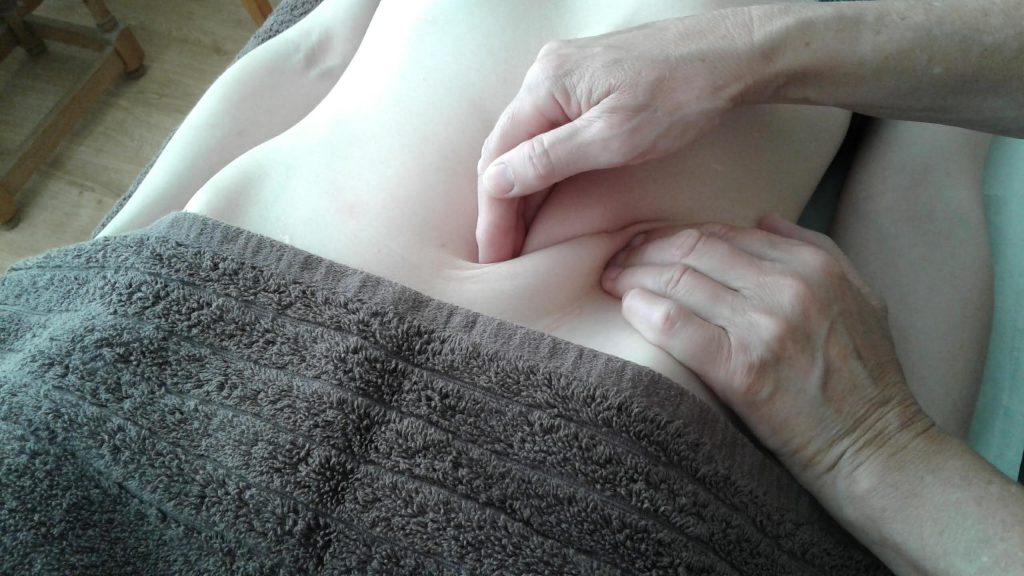What are the risks of abdominal surgery?
I am fascinated by working with pelvic and abdominal scars. In the main I see women with anything from a laparoscopic scar to full blown abdominoplasty (the innocuously named ‘Tummy Tuck’ which is, in fact, major surgery with hip to hip incision). Cosmetic scars are on the rise, worryingly, as girls younger and younger compare themselves to social media icons and decide to distort their bodies to replicate those of the famous. Bowel surgery, hysterectomy, stoma closures…..you name it, I’ve seen it and worked with it. Because these scars definitely need some tender loving care!
It’s what lies beneath that matters: “In ideal conditions, the wound will heal in a manner that mimics the normal tissue alignment – like hanging patterned wallpaper – so that continuity is complete, an apparently perfect match is restored, and the boundary of the old wound is virtually invisible. Commonly, an injury or surgical wound involves unavoidable tissue loss and excessive tension or complications may arise such as infection or necrosis of the wound edge that may leave a gap or defect too wide to be bridged by primary repair. Instead, a raw surface has to be left to heal, resulting in a shallow depression of wide scar that may lack the normal integrity and typical features of healthy skin such as pigmentation, hair follicles and sweat glands.
“………Sometimes, in the course of healing, one fascial sheet will stick to another causing adhesions that bridge a superficial layer to a deep one. For example, in a compound limb fracture, the periosteum of the bone may become fixed to the overlying skin, and the scar will be thin and hard, and often tender, tethered to the underlying bone[1].”
With abdominal scarring in particular, there are many vital structures underneath the surgical incision and adhesions from the scarring process can affect any one or more of them. Liver, stomach, bowel, womb, ovaries and more….. any nearby structure might be affected and, because of the full body continuity of the fascia, the tension and distortion created can and will cascade through the fascial matrix. The fascia sheathes everything in the body from cell to bone to organ, so anything caught up in this cascade may be affected; the factors that decide what structures will be stuck or functionally altered are many, so a pattern in one person will never be the same as in another. It’s all internal, so it cannot necessarily be seen, although a skilled therapist can understand what is happening through visual and palpatory skills.
The only medical remedy to allay the pain, reduced functionality and reduced mobility that may result from this process is a ‘scar revision’, i.e. to cut out the scar, remove all the adhesions and sew up the incision again. Inevitably, this will normally lead to adhesions redeveloping, often worse and causing more pain than ever. For this reason, it is not done as often as it used to be.
I trained in Sharon Wheeler’s ScarWork back in 2012 and have been an accredited teacher of ScarWork since 2015. I teach my students the foundation 4-day ScarWork course, but I also run a specialist course in Working with Pelvic/Abdominal Scarring with Full Body Integration. Why the latter course? Because there are ways of taking normal ScarWork further, and the depth of the adhesions in the abdominal cavity can require a bit more skill to optimise the work. There is not much we can do for a strangulated bowel, and to be honest, anyone showing symptoms of this should be in hospital for emergency surgery anyway. But we can help them once discharged, with the aim of preventing recurrence. Caesarean scars often get adhered to the bladder (causing mild or severe incontinence), or the bowel (ditto), or the pubic bone. Different scars, different history of injury in each person; unique patterns in each body. Appropriate applied techniques have been known to ease and even clear symptoms. The touch is light, and kind to the recipient as well as being easy on the therapist – no traditional ‘breaking down’ of scarring required!

Gentle abdominal torsion work, which must be comfortable for the client, helps to clear deeper restrictions. Photo: Adam Trewartha.
Reprinted by kind permission of Handspring Publishing.
There are Facebook groups dedicated to people suffering from adhesions pain – the agonising cries for help are terrible to read. We can’t promise to heal everyone, but with ScarWork we can usually make a difference.
References:
[1] Dr Niall Galloway, Scars, Adhesions and the Biotensegral Body, Trewartha, J., Wheeler, S.L. Pub. 2020 by Handspring Publishing. Chap.2 p.10.
How can we help you?
- To find a ScarWork practitioner in the UK and US, follow this link. For abdominal or pelvic scarring choose someone who has completed Jan’s specialist course.
- To volunteer as a ‘Scar Model’ for courses run in the UK by Jan Trewartha, email admin@bodyinharmony.org.uk to be added to the mailing list.
- Scars, Adhesions and the Biotensegral Body has been written for therapists and anybody else interested in the effects of scarring and how to work with them. Click here to purchase.
Further reading around this topic:
